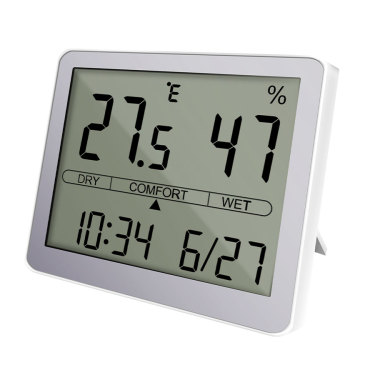Smart Indoor Outdoor Thermometer for Accurate Temperature Monitoring

# Smart Indoor Outdoor Thermometer for Accurate Temperature Monitoring
## The Importance of Temperature Monitoring
Monitoring temperature in both indoor and outdoor environments has become increasingly important in our daily lives. Whether you’re a homeowner, gardener, or weather enthusiast, having accurate temperature readings can help you make informed decisions about your environment.
## What is an Indoor Outdoor Thermometer?
An indoor outdoor thermometer is a device that measures and displays temperature readings from both inside and outside your home or building. These smart devices have evolved significantly from traditional mercury thermometers, offering digital displays, wireless connectivity, and advanced features.
### Key Features of Modern Smart Thermometers
Today’s smart indoor outdoor thermometers come packed with useful features:
– Wireless sensors for remote temperature monitoring
Keyword: indoor outdoor thermometer
– High-precision measurements with ±0.5°C accuracy
– Multi-zone temperature tracking
– Humidity monitoring capabilities
– Smartphone connectivity via Bluetooth or Wi-Fi
– Historical data logging and trend analysis
## Benefits of Using a Smart Thermometer
Investing in a quality indoor outdoor thermometer offers numerous advantages:
### 1. Improved Comfort
By monitoring both indoor and outdoor temperatures, you can better regulate your home’s climate for optimal comfort.
### 2. Energy Efficiency
Understanding temperature variations helps you make smarter decisions about heating and cooling, potentially reducing energy costs.
### 3. Health and Safety
Monitoring humidity levels along with temperature can help prevent mold growth and maintain a healthy living environment.
### 4. Gardening Applications
For gardening enthusiasts, tracking outdoor temperature variations is crucial for plant care and protection from frost.
## Choosing the Right Indoor Outdoor Thermometer
When selecting a thermometer for your needs, consider these factors:
– Measurement range (-40°F to 140°F is typical for outdoor use)
– Sensor transmission range (important for large properties)
– Battery life and power options
– Display readability (backlit screens are useful at night)
– Additional features like weather forecasting or air quality monitoring
## Installation and Maintenance Tips
Proper installation ensures accurate readings:
– Place outdoor sensors in shaded, well-ventilated areas
– Keep sensors away from direct sunlight, rain, and heat sources
– Regularly check and replace batteries
– Clean sensors periodically to prevent dust buildup
– Calibrate your device annually for maximum accuracy
## Future of Temperature Monitoring Technology
The field of environmental monitoring continues to evolve with exciting developments:
– Integration with smart home systems
– AI-powered temperature prediction
– Solar-powered sensors with extended battery life
– Ultra-compact designs with improved durability
– Advanced analytics for personalized climate recommendations
Whether you’re looking to optimize your home environment, protect your garden, or simply satisfy your curiosity about weather patterns, a smart indoor outdoor thermometer is an invaluable tool that brings precision and convenience to temperature monitoring.